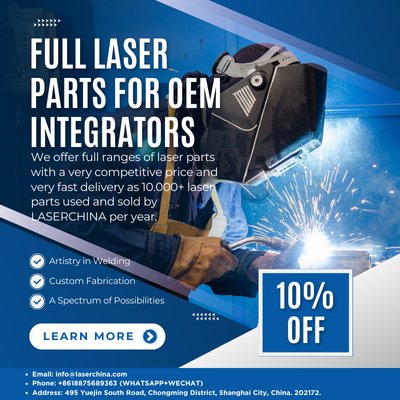Handheld metal laser welders have revolutionized the way metal welding is done in various industries. These compact, portable tools combine the precision and efficiency of laser technology with the flexibility of a handheld device, making them an invaluable asset for both manufacturing and repair work. Below, we will explore the key benefits and applications of handheld metal laser welders.
1. Precision and Quality
One of the most significant advantages of handheld laser welders is the precision they offer. Unlike traditional welding methods, such as MIG or TIG welding, which can be affected by heat distortion and require careful control, laser welding uses highly focused beams of light to create precise welds. The concentrated heat from the laser allows for fine control over the weld bead, producing smoother and more consistent results. This level of precision makes it ideal for industries where the quality of the weld is crucial, such as aerospace, automotive, and electronics manufacturing.
Laser welding also reduces the heat-affected zone (HAZ), which minimizes the risk of warping or damaging the surrounding material. This makes handheld laser welders an excellent choice for thin metals and delicate components where traditional welding methods might be too aggressive.
2. Speed and Efficiency
Handheld metal laser welders are also highly efficient. The ability to create strong welds quickly, without the need for complex preparation or post-welding finishing, can dramatically speed up production processes. This is especially beneficial in industries that demand high-volume production, such as automotive manufacturing and sheet metal fabrication. The reduced time spent on each weld also leads to significant cost savings.
Because handheld laser welders use focused energy instead of a physical electrode or filler material, they reduce material waste, further improving the cost-effectiveness of the process. This efficiency also extends to energy usage. Laser welding tends to be more energy-efficient compared to traditional welding methods, which often require significant power to maintain high temperatures in a larger area.
3. Portability and Versatility
The handheld design of these welders provides remarkable portability, making them useful for a wide range of applications. Unlike traditional welding machines, which are often bulky and require specialized setups, handheld laser welders can be used in various environments—both in the factory and on the job site. Their portability makes them an excellent choice for on-site repairs, especially in industries like automotive repair, construction, and shipbuilding.
Additionally, handheld laser welders are versatile and can be used on various materials, including steel, aluminum, copper, and titanium. They are particularly effective for welding thin metals, which can be difficult to work with using conventional welding methods due to the risk of warping or distortion.
4. Minimal Post-Weld Treatment
Laser welding typically results in a clean, precise weld with minimal spatter or contamination. This means that, in many cases, there is little need for post-weld cleaning or finishing. This benefit is particularly valuable when working with materials that are prone to corrosion, as the cleaner welds reduce the need for protective coatings or extra processing steps.
5. Applications Across Industries
Handheld laser welders have found applications in a wide range of industries. In the automotive industry, for example, these welders are used to repair or fabricate parts with high precision, especially in the assembly of complex components like sensors, fuel systems, and exhaust systems. Similarly, the electronics industry benefits from laser welding’s ability to handle small and delicate parts, which require a high degree of accuracy without causing heat damage to sensitive components.
In aerospace, handheld laser welders are used for assembling and repairing lightweight, high-strength materials used in aircraft components. The same is true for the medical device industry, where precision welding is essential for creating components like surgical instruments or implantable devices.
Conclusion
Handheld metal laser welders have become an essential tool in modern manufacturing and repair processes. Their precision, speed, portability, and efficiency make them ideal for a wide range of applications, from industrial manufacturing to on-site repairs. As technology continues to advance, it is likely that handheld laser welders will become even more accessible and versatile, expanding their role in diverse industries.
